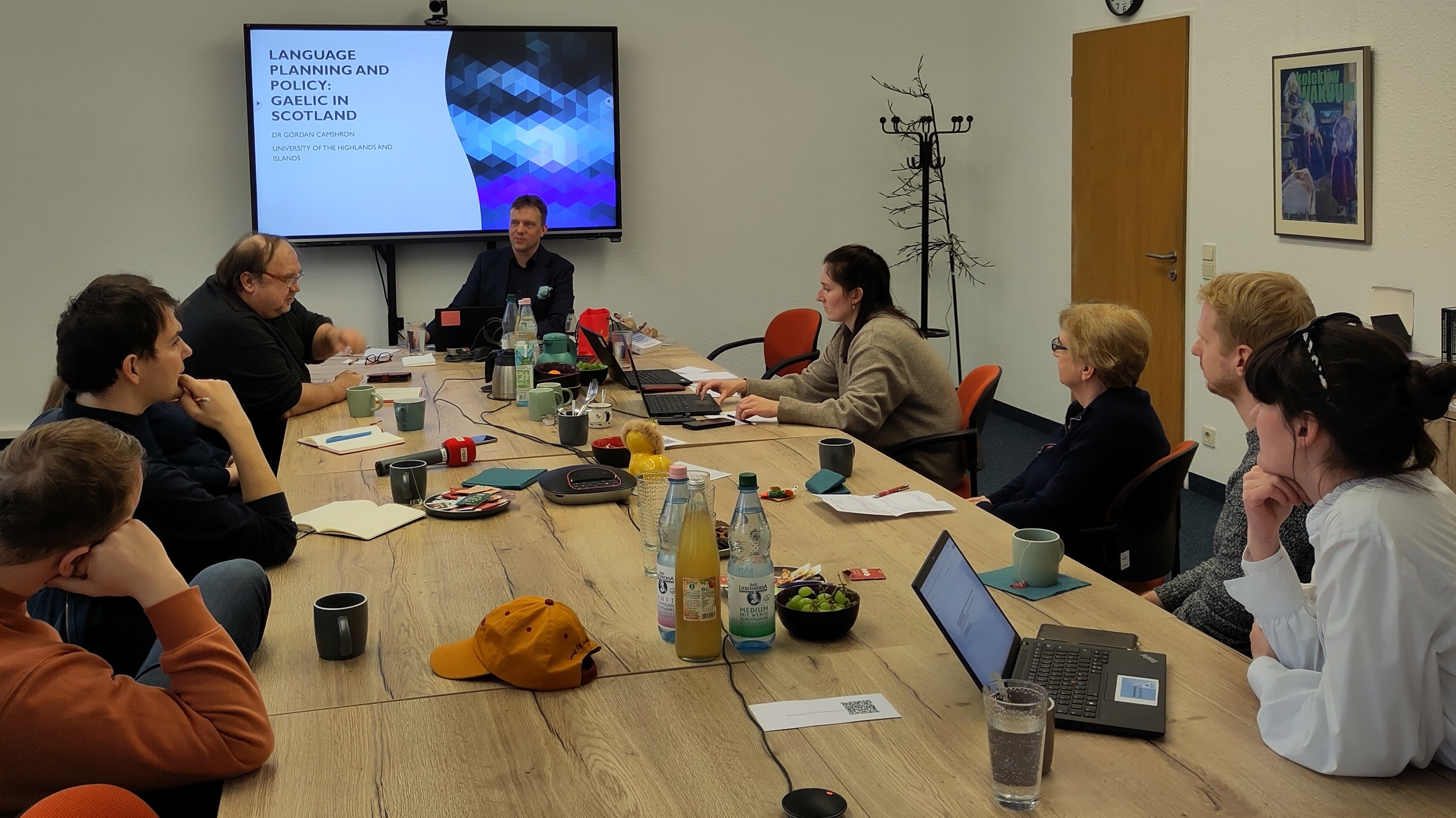Sorbian Connection
Dr Gordon Cameron visited Brandenburg in Germany to share knowledge and ideas with representatives of the Lower Sorbian language community. Lower Sorbian (spoken mostly in Brandenburg) and Upper Sorbian (spoken primarily in Saxony, to the north) are minoritised languages which face multiple challenges, some of which are similar to those faced by Gaelic in Scotland today.

The visit entailed experiencing the Zorja language nest programme, which aims to give adults a full immersion experience in a Lower Sorbian linguistic and cultural environment. Zorja is located in Dešno (Dissen), which retains a relatively healthy local speaker community passionately supported by dedicated activists.
In theory, Chóśebuz is the ‘most bilingual’ city in Germany, in which the minoritised Lower Sorbian language operates alongside the dominant German language. As Měto Nowak (a researcher at the Serbski Institut) explained, this is not necessarily the case.
Gordon had informal discussions with the team at the Serbski Institut, before delivering a lecture on the Gaelic language policy landscape in Scotland, current developments (such as the Scottish Languages Bill which is going through the Scottish Parliament) and the work of the Language Sciences Institute. This was followed by around an hour’s discussion on issues relating to language policy, community building, environmental impacts on culture, and so on. After the lecture, Gordon was interviewed by RBB, the Lower Sorbian radio station.
A visit to the Institute for Sorbian Studies at the University of Leipzig included a very useful discussion on various sociopolitical issues affecting the condition of minoritised languages in today’s Europe.
Gordon is following up on the contacts generated, and it is hoped that some positive mutual developments may arise in the future.
Huge thanks to Sophie Rädel, for organising the itinerary and logistics of the visit and lecture, and to Měto Nowak for generously sharing so much of his time and expertise on language planning and linguistic landscapes in Chóśebuz.